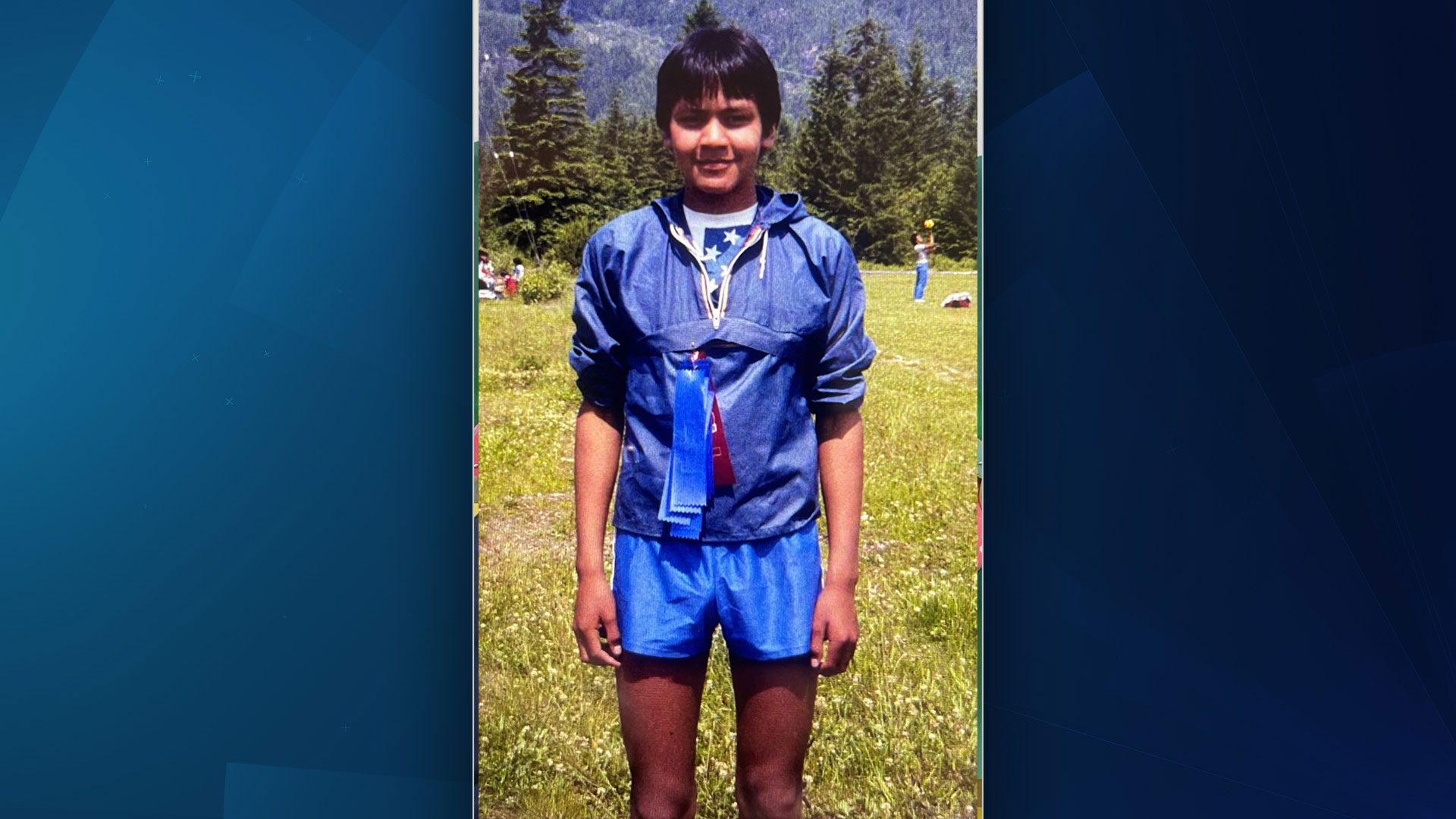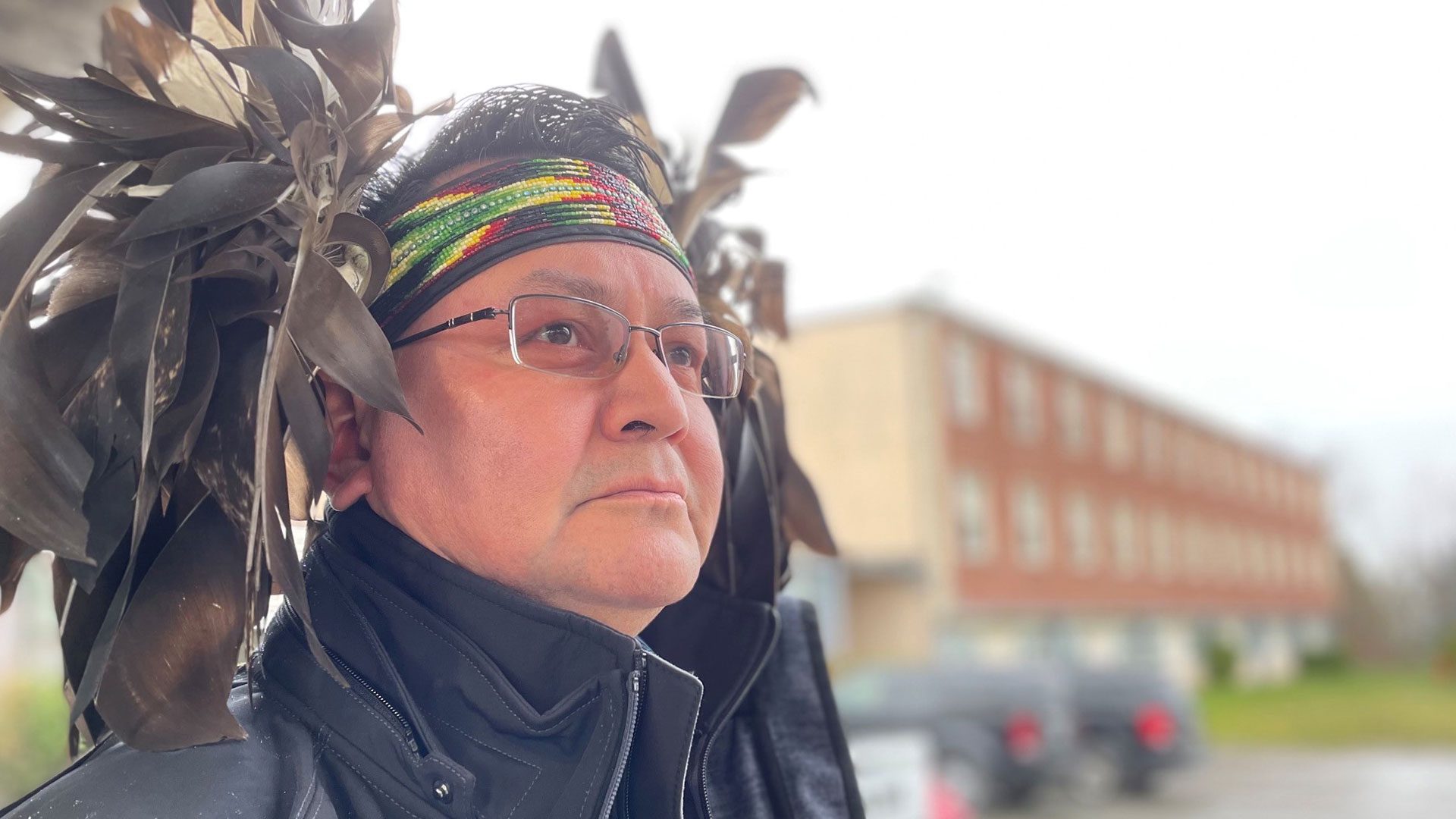On a grey day, Ralph Leon stands with his hands in his pockets on the asphalt driveway in front of the former St. Mary’s Indian Residential School located just outside of Mission, BC.
Rain collects on his glasses. He speaks in calm, quiet tones.
“I haven’t come back here because of what is still in my mind what I witnessed here, mental abuse, physical abuse, sexual abuse, verbal abuse that I witnessed here,” he says.”
Leon, a school survivor who is now chief, was taken from his Sts’ailes First Nation outside Mission, B.C., and forced to attend the school when he was 10 years old.
He says it’s an experience that has scarred him for life.
“No amount of money, no counsellor could ever take that away from my mind because it’s always going to be there,” Leon says.
Leon isn’t afraid to go back in time and talk about it.
He says he remembers that they took him by car through the back roads, 70 km west to Vancouver – finally back to Mission and to St. Mary’s.
Leon believes they took the route they did to make him believe he was far from home. In reality, it was only a half-hour from his community and he didn’t know that it was his territory that he was looking from his dormitory window.
St. Mary’s Indian Residential School

St. Mary’s was first opened its doors in 1863 as a boarding school but then re-opened as a residential school in 1882 run by the Catholic Church and later the federal government.
It closed for good in 1984.
With that closure, countless stories emerged of the abuses that took place there.
In 2004, former school employee Gerald Moran was convicted of 12 counts of indecent assault and sentenced to three years in prison. Others were also investigated.
The former school is now office space for his nation and a daycare.
The long halls feature tall ceilings and brick walls.
There’s an area Leon remembers where students brushed their teeth. Another area is where staff would cut their hair.
Then Leon walks to a small utility room he remembers well.
“This area was a storage room from where they kept the mops and brooms and stuff like that I’m surprised the sink is still there,” he says looking down. “But this little room you didn’t want to end up in. The things I witnessed in this room is devastating to any human being you know and I never wish that on any child you know.
“All abuses happened in this room. It’s my first time looking in this room for years.”
While the old utility room brings back memories, a trip to the second floor literally takes him to a different level.
The floor is kept locked – but a janitor agrees to open it up.
The unlocked floor at St. Mary’s features a jail cell complete with bars, a small toilet without a seat, and a bed.
Leon didn’t know this existed – and wondered why this could possibly be needed for anything.
“I know of my ancestors, the ones who passed, they used to tell me stories of ‘you don’t want to be too bad and end up in rooms like this you know,’” he says. “It’s what they have control of it’s something that we never wish on anybody.”
APTN News wasn’t able to confirm whether the cell was from the residential school era. However numerous residential school survivors from across Canada have testified that they recalled similar jail cells in other residential schools.
Back outside the old school, Leon reflects on this tour. He knows people who had a similar experience understand how he feels about it today.
“The people that are probably watching this, they could understand what I’m saying,” he says. “They can see that my hair is short, it’s combed the clothes that I’m wearing is modern so this place did its job.
“We are like broken people still. “This is only one residential school, there is still the scoop, foster care, day school, all those things and it started where?”
Going to Vatican City

With his return to the St. Mary’s school under his modern belt, Leon set off for a different kind of tour.
He, along with his wife Annie who attended boarding school, and his close family members travelled to Vatican City.
They were part of an Indigenous delegation who were meeting with Pope Francis to talk about the atrocities that were committed on Indigenous children under the guise of religion.
The Métis, Inuit and First Nations delegations each had their own one-hour audience with Francis.
On April 1, the last day of the trip, all three came together for a final meeting.
That’s when Francis says that he felt shame and sorrow.
“For the role that a number of Catholics, particularly those with educational responsibilities, have had in all these things that wounded you, and the abuses you suffered and the lack of respect shown for your identity, your culture and even your spiritual values,” the Pope starts.
“For the deplorable conduct of these members of the Catholic Church, I ask for God’s forgiveness and I want to say to you with all my heart, I am very sorry. And I join my brothers, the Canadian bishops, in asking your pardon.”

Outside, in St. Peter’s Square in Vatican City, the delegations stand and meet the media under cloudy skies.
Some dance, others sing or drum. “
Leon stands with his traditional headdress. He’s asked what this moment means. He chooses his words thoughtfully.
“Today is a historical day, historical day for our ancestors, historical day for our elders of today, our survivors of today,” he says. “It’s a big step forward you know, it’s a step forward of being here. The spirit of our ancestors is with us and that’s why it’s emotional.”
Leon said the trip to Rome allowed him to confront his past and make steps in his healing journey.
“Today I’m really grateful for my culture.”









